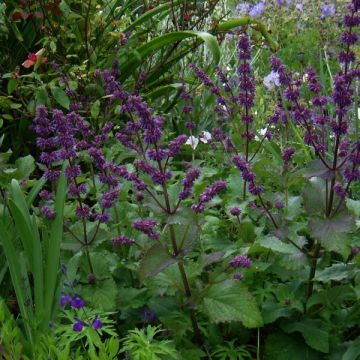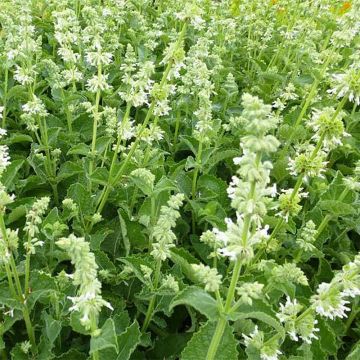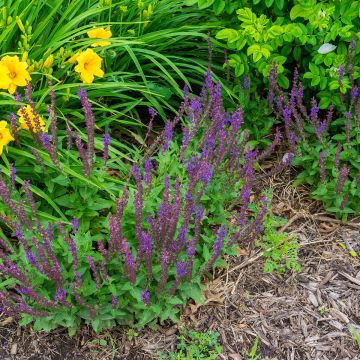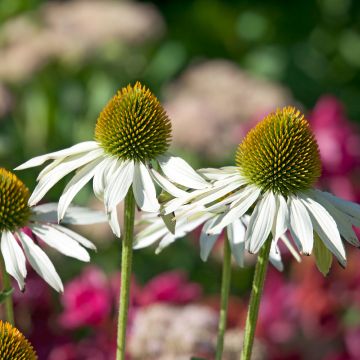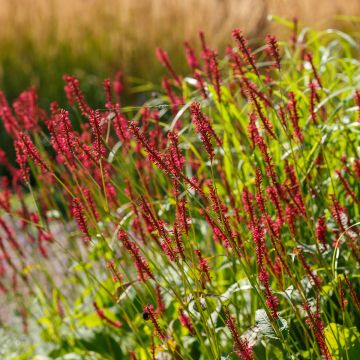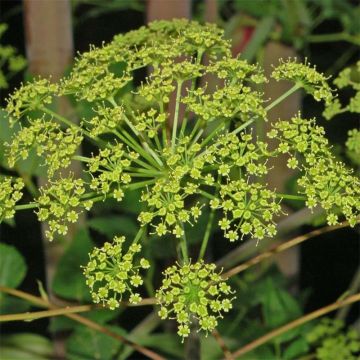

Salvia greggii Icing Sugar


Salvia greggii Icing Sugar
Salvia greggii Icing Sugar
Salvia greggii Icing Sugar
Autumn Sage, Cherry Sage, Gregg's Sage
This item cannot be shipped to the selected country
Delivery charge from €5.90
Delivery to Corse prohibited
More information
Delivery charge from €5.90
Delivery to Corse prohibited
More information
Schedule delivery date,
and select date in basket
This plant carries a 12 months recovery warranty
More information
We guarantee the quality of our plants for a full growing cycle, and will replace at our expense any plant that fails to recover under normal climatic and planting conditions.
From €5.90 for pickup delivery and €6.90 for home delivery
Express home delivery from €8.90.
Delivery to Corse prohibited: UE law prohibits the import of this plant from mainland France to Corse as part of the fight against Xylella fastidiosa. Please accept our sincere apologies.
More information
Does this plant fit my garden?
Set up your Plantfit profile →
Description
Salvia greggii 'Icing Sugar' is a delightful variety of shrubby sage. It is characterized by a rather stocky habit and, above all, by its bicolour flowering displaying two particularly pretty shades of pink, from late summer until the first frosts. Pretty purple flower buds give rise to delicate small fuchsia pink flowers, with a very tender pink lower lip. They shine in the sun and blend with a dark green and very aromatic evergreen foliage. This bushy perennial is moderately hardy, but is indifferent to summer heat and only requires a very well-drained, even poor and chalky soil, in a sunny or semi-shaded position.
Salvia greggii, also known as Texas Sage or White Sage, belongs to the family of Lamiaceae or Labiatae and is native to the Mexican mountains, as well as southern Arizona. The 'Icing Sugar' variety is a woody and branched perennial that has a bushy and spreading habit, as wide as it is tall. It will reach about 55 cm (22in) in all directions. The nectar-rich, honey-scented flowering is particularly generous, especially in autumn from September to November if the cold does not put an end to it. The small elongated flowers emerge from dark reddish-purple calyxes, grouped in spikes on purple and branched stems. They are barely more than 2 cm (1in) long, but their colour mixing two unprecedented shades of pink is particularly bright. They only live for a day, covering the ground with their petals in the evening, but will be replaced the next morning. The evergreen foliage is composed of very narrow leaves, 2 cm (1in) long, dark green to greyish, thick and aromatic, slightly sticky, releasing a strong fresh and tangy smell with heat. In case of intense drought, the plant may partially lose its leaves, without affecting its health. New buds will develop as soon as the rains return.
This moderately hardy (-10°C (14°F) in well-drained soil) shrubby sage will accompany the summer blue flowering of perennial geraniums 'Rozanne', Agastaches and perennial flaxes. But its association with autumn asters is fabulous: choose those that are content with little, such as Aster laevis, Aster turbinellus or Aster amellus for example. Gauras, tall sedums (Sedum 'Matrona'), shrubby potentillas and beautiful autumn foliage (Euonymus alatus 'Compactus', Nandina domestica 'Firepower', Miscanthus sinensis 'Afrika') will compose an elegant tableau with it. On the terrace, place it in a large pot, right next to an Imperata cylindrica 'red baron'; the contrast of colours and shapes is fantastic!
In Mexico, a delicious tea is prepared with the leaves of this sage, which is called "mountain myrtle" there.
Salvia greggii Icing Sugar in pictures




Flowering
Foliage
Plant habit
Botanical data
Salvia
greggii
Icing Sugar
Lamiaceae
Autumn Sage, Cherry Sage, Gregg's Sage
Cultivar or hybrid
Other Salvia - Sage
Planting and care
Easy to grow, Shrubby Sage can be planted all year round, except during freezing periods. It can withstand temperatures down to -10°C (14°F) in very well-drained soil, enriched with gravel or coarse sand, in a sunny and sheltered location. Plant in a sunny exposure or partial shade. It is a plant that thrives in light, moist but well-drained soil. It is also adapted to dry soil, so it is better to forget to water rather than overwater. At planting, you can add a base fertilizer. Apply a mulch when the cold weather approaches, or cover the plant with fleece. Watering is beneficial in summer, during prolonged drought. As for pruning, lightly trim the stems that compromise symmetry and cut back to 20 cm (8in) from the ground after the last strong spring frost (in March-April depending on the region). Remove faded flowers when possible.
Planting period
Intended location
Care
-
, onOrder confirmed
Reply from on Promesse de fleurs
Summer flowering perennials
Haven't found what you were looking for?
Hardiness is the lowest winter temperature a plant can endure without suffering serious damage or even dying. However, hardiness is affected by location (a sheltered area, such as a patio), protection (winter cover) and soil type (hardiness is improved by well-drained soil).

Photo Sharing Terms & Conditions
In order to encourage gardeners to interact and share their experiences, Promesse de fleurs offers various media enabling content to be uploaded onto its Site - in particular via the ‘Photo sharing’ module.
The User agrees to refrain from:
- Posting any content that is illegal, prejudicial, insulting, racist, inciteful to hatred, revisionist, contrary to public decency, that infringes on privacy or on the privacy rights of third parties, in particular the publicity rights of persons and goods, intellectual property rights, or the right to privacy.
- Submitting content on behalf of a third party;
- Impersonate the identity of a third party and/or publish any personal information about a third party;
In general, the User undertakes to refrain from any unethical behaviour.
All Content (in particular text, comments, files, images, photos, videos, creative works, etc.), which may be subject to property or intellectual property rights, image or other private rights, shall remain the property of the User, subject to the limited rights granted by the terms of the licence granted by Promesse de fleurs as stated below. Users are at liberty to publish or not to publish such Content on the Site, notably via the ‘Photo Sharing’ facility, and accept that this Content shall be made public and freely accessible, notably on the Internet.
Users further acknowledge, undertake to have ,and guarantee that they hold all necessary rights and permissions to publish such material on the Site, in particular with regard to the legislation in force pertaining to any privacy, property, intellectual property, image, or contractual rights, or rights of any other nature. By publishing such Content on the Site, Users acknowledge accepting full liability as publishers of the Content within the meaning of the law, and grant Promesse de fleurs, free of charge, an inclusive, worldwide licence for the said Content for the entire duration of its publication, including all reproduction, representation, up/downloading, displaying, performing, transmission, and storage rights.
Users also grant permission for their name to be linked to the Content and accept that this link may not always be made available.
By engaging in posting material, Users consent to their Content becoming automatically accessible on the Internet, in particular on other sites and/or blogs and/or web pages of the Promesse de fleurs site, including in particular social pages and the Promesse de fleurs catalogue.
Users may secure the removal of entrusted content free of charge by issuing a simple request via our contact form.

































